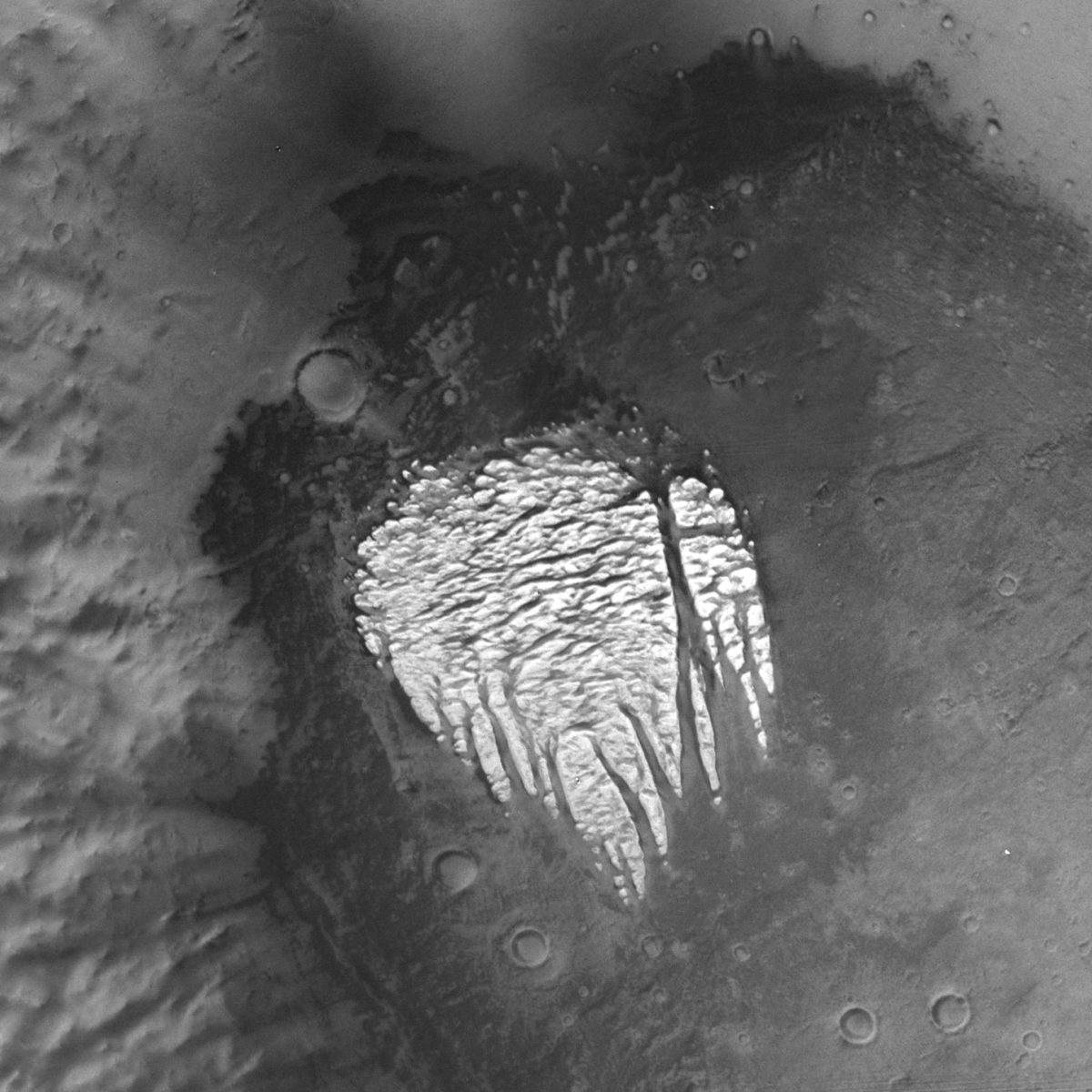All
All
Stories, updates, insights, and original analysis from The Planetary Society.
Celebrate Apollo 11's 40th Anniversary with the Crew
This summer, the Smithsonian Institution's National Air and Space Museum in Washington, D.C. will commemorate that extraordinary moment in history with a very special Apollo 11 celebration, featuring the mission's original crew members along with former Johnson Space Center Director Chris Kraft.
An Auspicious Week for Astronomy
On Monday, if all goes well, we will launch the Space Shuttle to rejuvenate one the greatest scientific missions launched on or off the Earth: the Hubble Space Telescope.
White Rock through the Ages: Mars Reconnaissance Orbiter (2006-present)
I apologize for the long hiatus in this White Rock series, but I hope this entry will be worth the wait.
White Rock through the ages: Mars Global Surveyor (1997-2006)
We first spotted the strange bright feature colloquially known as
White Rock through the ages: Viking (1976-1980)
This is the second installment in my look at one enigmatic feature on Mars as seen by all its orbiters through the more than thirty years of spacecraft observations.
White Rock through the ages: Mariner 9, 1972
While conversing with Ken Edgett about the smiley face on Mars he remarked to me how different Mars looks at different pixel scales, and in particular that there is a transition somewhere in the neighborhood of six to seven meters per pixel.
The Space Age turns 50
Around the world, there is conversation today about the fiftieth anniversary of the launch of Спутник, that is, Sputnik, Earth's first unnatural satellite.
Pluto: The Discovery of a Planet
To mark the 75th anniversary of the discovery of the planet Pluto, The Planetary Society presents to its readers the remarkable story of the discovery.
The Discovery of a Planet, Part 6: From Pluto to Sedna
74 years after Clyde Tombaugh discovered Pluto as a faint dot on a pair of photographic plates, a modern group of astronomers made another remarkable discovery. On March 15, 2004, Michael Brown of Caltech, Chad Trujillo of the Gemini Observatory, and David Rabinowitz of Yale announced the discovery of Sedna – the furthest object ever detected in the Solar System.
The Discovery of a Planet, Part 5: The Aftermath
The discovery of Planet X was announced to the world on March 13, 1930, which marked the anniversary of William Herschel’s discovery of Uranus in 1781 as well as Percival Lowell’s birthday. The observatory’s communiqué emphasized that the discovery was no coincidence, but the vindication of Lowell’s predictions made years before.
The Discovery of a Planet, Part 4: Clyde's Search
Since his teenage years Clyde Tombaugh had been an avid amateur astronomer and a gifted telescope builder. Based on instructions contained in an article from a boy’s Sunday school paper, he built a series of telescopes of increasing power and quality on the family farm.
The Discovery of a Planet, Part 3: Planet X
The discovery of Neptune accounted for nearly all the unexplained motions of the outer planets of the Solar System. Nevertheless, several astronomers insisted that some unexplained residual motions remained, pointing to the presence of a ninth planet beyond the orbit of Neptune.
The Discovery of a Planet, Part 2: Out of the Six-Planet World
Since humans first set their eyes to the stars, they noticed that a few of these bright objects behaved differently from the others. Whereas all the stars moved together, revolving around the Earth once every 24 hours, five appeared to move within the firmament among the other stars. Accordingly, they were named “planets,” meaning “wanderers” in Greek.
The Discovery of a Planet, Part 1: The Blinking Image
February 18, 1930, was a cloudy day at the Lowell Observatory, on top of Mars Hill in Flagstaff, Arizona. 22 year old Clyde Tombaugh was hard at work, peering through the lens of an ancient-looking brass-colored device. The instrument, known as a “blink comparator,” mounted two large photographic plates.
The Stories Behind the Voyager Mission: Linda Morabito Kelly
Linda Morabito Kelly began working at Jet Propulsion Laboratories while still a student at the University of Southern California. In 1974, she accepted a fulltime position as an engineer in the Satellite Ephemeris Development and Orbit Determination section JPL.
The Stories Behind the Voyager Mission: Charles Kohlhase
Charles Kohlhase served as Mission Design Manager for Voyager from 1974 to 1989. He brought more than a decade's worth of experience working on the Mariner and Viking missions to the position.
The Stories Behind the Voyager Mission: Bruce Murray
Bruce C. Murray served as the only geologist on the team planning the Grand Tour, which was cancelled by NASA in 1972, but which led to Voyager the same year. He later became the Director of the Jet Propulsion Laboratory (JPL), a position he held from 1976 to 1982, the early glory years of the mission.
The Stories Behind the Voyager Mission: Bud Schurmeier
Harris 'Bud' Schurmeier served as the first Project Manager for the Voyager mission. In 1976, just before the twin spacecraft launched, he became Assistant Lab Director at the Jet Propulsion Laboratory (JPL).
The Stories Behind the Voyager Mission: Ed Stone
Edward C. Stone, an internationally renowned physicist, signed on as Project Scientist of the Voyager mission in 1972, responsible for coordinating the efforts of 11 teams of researchers.
The Stories Behind the Voyager Mission: Jurrie van der Woude
Jurrie van der Woude worked for 25 years in the Jet Propulsion's Laboratory's Public Affairs Office as Image Coordinator. It was Jurrie who, working closely with the Voyager imaging team, chose the best images to release to the press.


 Explore Worlds
Explore Worlds Find Life
Find Life Defend Earth
Defend Earth


 Sun
Sun Mercury
Mercury Venus
Venus Earth
Earth Mars
Mars Jupiter
Jupiter Saturn
Saturn Uranus
Uranus Neptune
Neptune Small Bodies
Small Bodies







